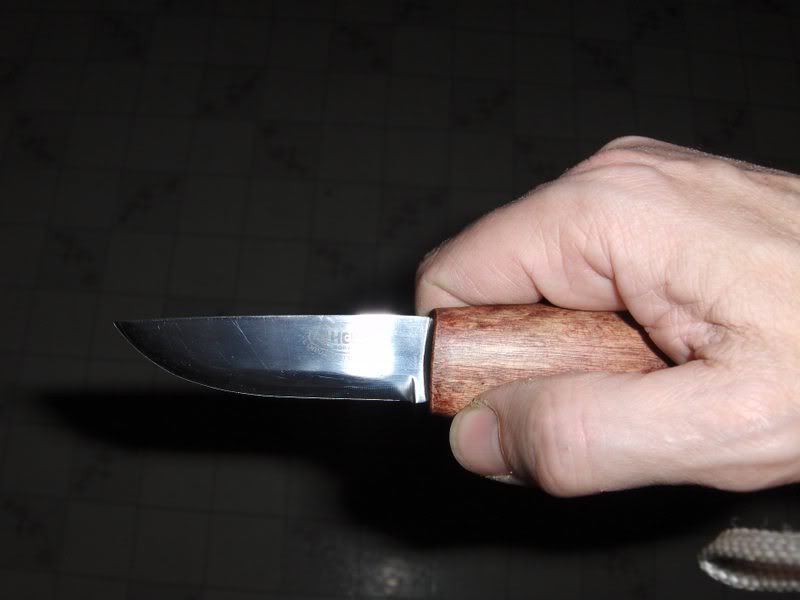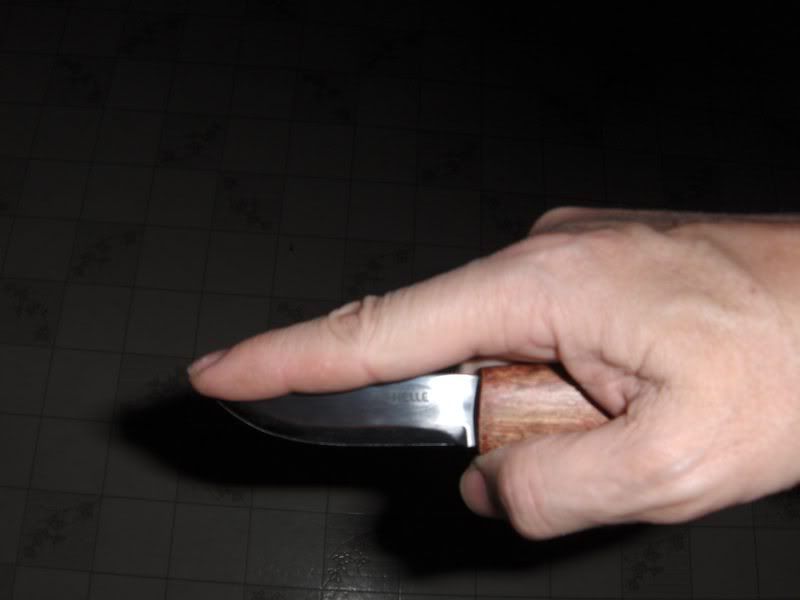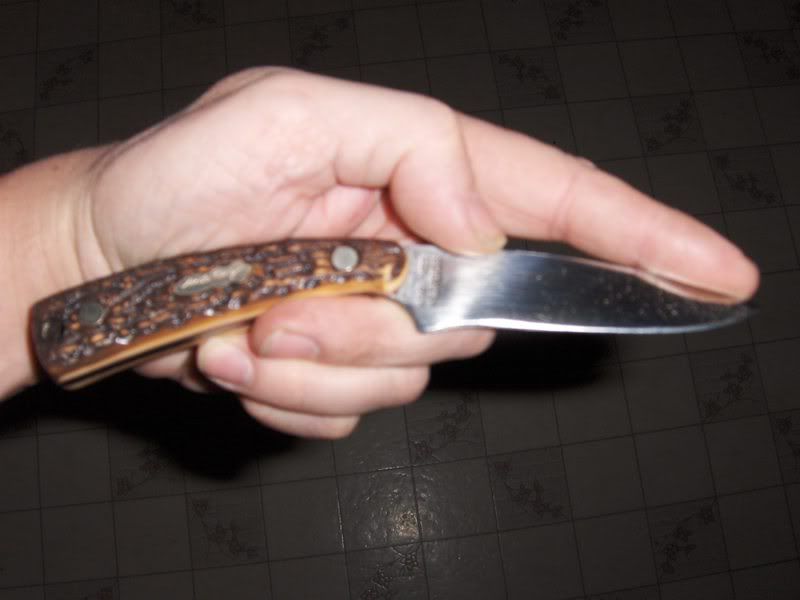i use a pocket knife made by Shrade Walden, but no longer available, with a 2 7/8" blade to reach up under the ribs to cut off the Esophagus. Unlike a sheath knife handle, the handle of this pocket knife is short enough to fit easily into the palm of my hand, so I am not restricted in the movement I can make inside the chest cavity. MY finger lies on top of the blade, to the point, so I can reach in blind with both hands, feel my finger tip without the chance of stabbing my other finger with the blade point. Once I have located the place I want to cut, I curl my finger back off the blade and make a single cut. The hands come out and I switch the knife from left to right hand, and repeat the process. I can then pull the throat and lungs out of the chest in one yank, and then pull the rest of the intestines and vicerae out of the carcass.
I use sheath knives for skinning the hide off the deer, along with a couple of folding knives, my Shrade, and a Gerber folder. These smaller blades are used to work in the smaller areas to remove flesh from the hide.
I have a Chicago Cutlery Bladed knife that is similar to the Green River design, and it is excellent to use to remove a lot of hide per stroke, with long sweeping cuts through the sinew, and connecting tissues.
I am not worried about my finger or hand slipping forward on the edge, because the wooden grips on the knifes hold the hand well even when bloody. I am not STABBING anything with these knives, so there is NOT the power stroke needed to move the hand forward onto the edge. I occasionally find my self wrapping my little finger around the back of the handle, to control any movement when working in close.
A guard or " hilt " would simply get in the way of doing the work fast and efficiently.
A better idea might be to grind or file a Choil( finger cutout) into the rear of the cutting edge of the blade, that is big enough to hold your index finger. That way, you put control the knife with your strongest finger, behind the edge, and do not worry about your fingers sliding forward onto the sharp edge.
Making this choil in the blade involves grinding and removal of metal, which could be done with the scales of the handle left on, and will involve much less time, and effort than deconstructing the knife so you can add a hilt or guard to the handle.











